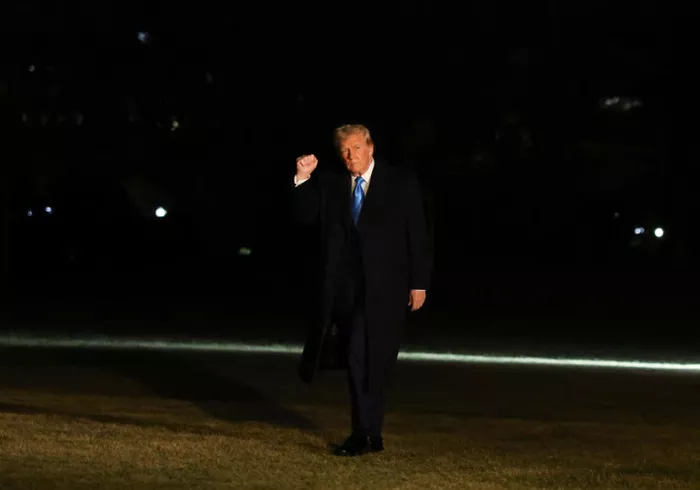The early days of Donald Trump’s renewed tariff strategy have made one thing clear: his approach this time around is markedly different from the first round of trade wars.
From the speed of tariff implementation to the broader scope of consumer goods affected, and Trump’s unique tactic of leveraging tariffs as bargaining chips, the president is taking an unpredictable and more aggressive stance.
After unveiling historic tariffs on the U.S.’s top three trading partners over the weekend, Trump once again stunned the markets on Monday with an abrupt shift in his strategy. As of Tuesday, a 10% tariff on Chinese goods is in effect, with Beijing responding swiftly. Meanwhile, the 25% tariffs on Canada and Mexico are temporarily suspended for a month while negotiations continue.
The global response has also shifted. China, for instance, on Tuesday, hinted at using investigations into companies like Google and Nvidia as leverage in the ongoing trade confrontation.
At a Politico event on Tuesday, Peter Navarro, Trump’s senior trade advisor, revealed that the president would speak with Chinese leader Xi Jinping later that day and that a potential tariff pause could be on the table.
This unpredictable mix of policies is causing confusion on Wall Street and within corporate America.
“It’s fundamentally different,” said Greta Peisch, former General Counsel for the U.S. Trade Representative, in an interview. “Trump is breaking new ground in terms of trade authority, its application, and the costs of these transactions.”
Key Differences in Trump’s Approach
This time, Trump’s tariff strategy is moving faster and targeting higher levels of duties. The “blanket tariffs first” approach that emerged this week stands in contrast to the gradual and more measured approach seen from 2017 to 2020.
Trump invoked a 1977 law this week that grants the president emergency powers to act swiftly and implement tariffs. In contrast, his previous strategy utilized more gradual methods and took longer to roll out.
During his first term, Trump began tariff discussions with China early in 2017, signing executive orders related to tariffs but refraining from imposing new duties for nearly a year. It wasn’t until January 2018 that he levied tariffs on solar panels and washing machines. By March of the same year, he targeted steel and aluminum imports.
Now, in his second term, Trump has reversed this sequence, imposing tariffs on China immediately while promising that talks with Beijing will follow later in the week.
Related topics:
- India Surpasses China in Gold Purchases, Buying 51% More in Three Months
- Gold Rates Skyrocket in Chennai on Diwali, 24K Gold Exceeds Rs. 81,000 Per 10 Grams
- Gold and Silver Prices Rise Across India on January 13, 2025


